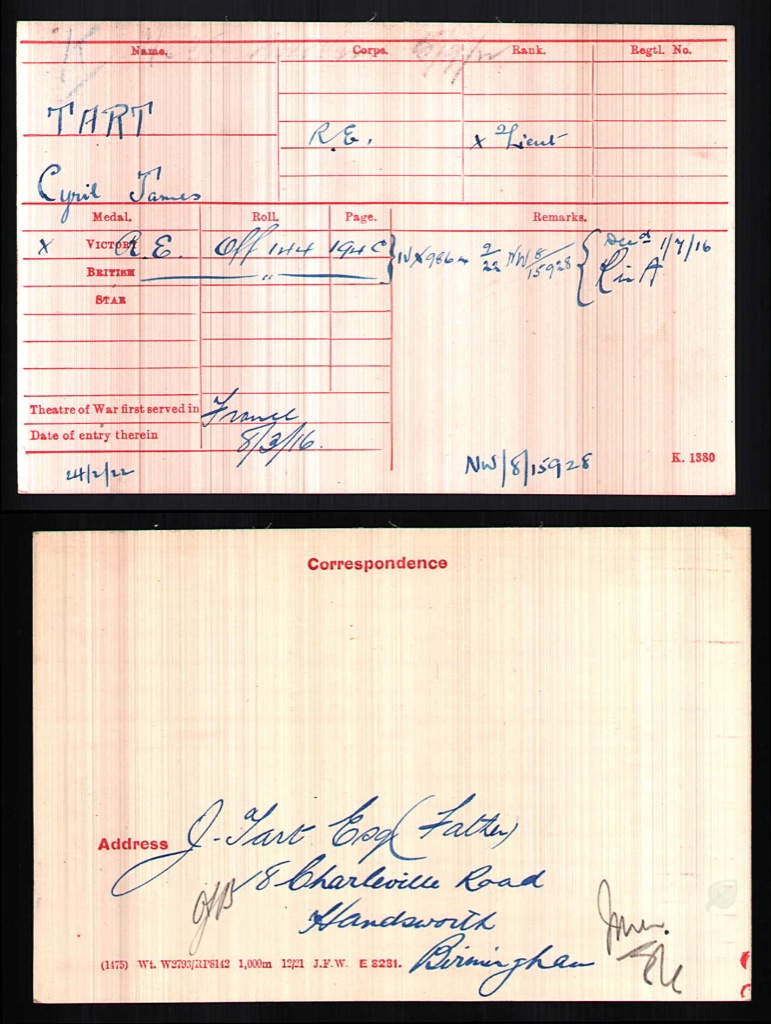Cyril James Tart, born on 14th November 1889, was admitted to King Edward’s School in September 1906.The eldest child in his family, he lived with his father, James, an estates’ manager, his mother, Harriet, and his five siblings at 18, Charleville Road, Handworth,
Cyril was in the Modern School, studying a curriculum that focused on sciences rather than classics. He was placed 8th out of 14th overall in his class, though he was already in the Modern Second Class. His Master was AS Langley, later Commander Langley, a chemistry teacher who pioneered smokescreen technology for the British Army during the war.
After leaving School, Cyril studied at London University, obtaining his BSc in Engineering at the age of twenty, the earliest possible time at which he could take the degree. He worked for 12 months as clerk to the Estates Committee of the Birmingham City Council, before moving to the Borough Surveyor’s Office, Southend. Later he entered the service of the Admiralty as a civil engineer, working at Rosyth in Scotland.
In September 1915, Cyril obtained permission to enlist and, on the recommendation of the President of the Institution of Civil Engineers, was given a commission as a Second Lieutenant with the Royal Engineers (Service Regiment), 219 Field Company. The Company received a warning to sail for France in November that year. Cyril’s military career was cut short on the first day of the Battle of the Somme, 1st July 1916, where he was killed by a shell in an attack on the German line near Albert on the Thiepval Salient (a salient in military terms being a bulge in the line). He was originally buried at Authuille, near the Somme, but for reasons which are unclear, he was exhumed on 28th September 1931 and reburied at Serre Road Cemetery No. 2, Beaumont-Hamel. The exhumation report shows that he was originally buried with his locket, which was then returned to Base and presumably forwarded to his family.





